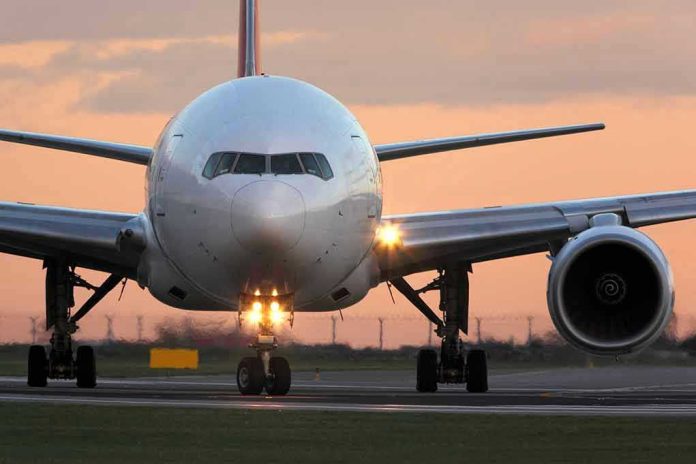
The sighting of drones over Copenhagen and Oslo airports highlights the vulnerabilities in airspace security, stirring geopolitical tensions with Russia.
Story Overview
- Drone sightings forced the temporary closure of Copenhagen and Oslo airports.
- Over 20,000 passengers experienced travel disruptions due to the closures.
- Authorities suspect possible Russian involvement, which Moscow denies.
- Security measures have been tightened at major European airports.
Drone Incidents Disrupt Nordic Airspace
On the evening of September 22, 2025, Copenhagen and Oslo airports were forced to suspend operations due to drone sightings in their airspace. This simultaneous disruption affected over 20,000 passengers, leading to flight diversions and delays. The incidents have been framed as a significant threat to critical infrastructure, raising concerns over airspace security and potential state-sponsored interference, particularly given the ongoing tensions with Russia.
Authorities in Denmark and Norway are investigating the drone sightings, with Danish police confirming the involvement of drones and suggesting that a “capable actor” is responsible. Despite speculation about Russian involvement, the Kremlin has denied any responsibility. The situation has further heightened scrutiny on airspace security measures across Europe.
Background of Drone Threats in Europe
The use of drones to disrupt airspace has been a growing concern in Europe, particularly since the escalation of the Russia-Ukraine conflict. Recent incidents involving drones entering NATO airspace have been reported in Poland, Romania, and Estonia. These events have set the stage for increased vigilance and rapid response to any drone activity near critical infrastructures, such as major airports.
Copenhagen Airport is the busiest in the Nordic region, serving as a major international hub, while Oslo Airport is Norway’s primary gateway. Both airports enforce strict no-fly zones for drones, reflecting broader European efforts to protect critical infrastructure from aerial threats.
Reactions and Implications
Following the incidents, both airports have resumed operations, with heightened security protocols in place. Danish Prime Minister Mette Frederiksen described the drone sighting as “the most serious attack” on Denmark’s critical infrastructure, while Norwegian Prime Minister Jonas Gahr Støre noted that it was unclear if the Oslo drone activity was deliberate. Ukrainian President Volodymyr Zelenskyy has accused Russia of violating Danish airspace.
These events have renewed calls for deploying anti-drone technology at airports and could lead to stricter drone legislation across Europe. The economic impact includes losses from flight diversions and delays, while politically, the incidents add pressure on governments to respond to potential foreign interference.
Drone Sightings Force Copenhagen and Oslo Airports to Close Temporarily https://t.co/BsO3qDjH4a
— Carol J Williams (@cjwilliamslat) September 23, 2025
Experts emphasize the vulnerability of airports to drone incursions, highlighting the need for rapid detection and response systems. Some caution against premature attribution to Russia without direct evidence, although the pattern of incidents fits with known Russian tactics. The situation underscores the urgent need for international standards on drone usage near critical infrastructures.
Sources:
Drone Sightings Force Copenhagen and Oslo Airports to Close



